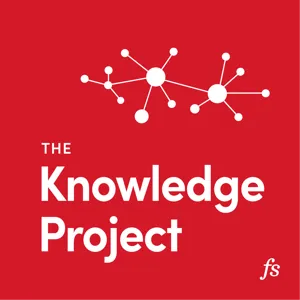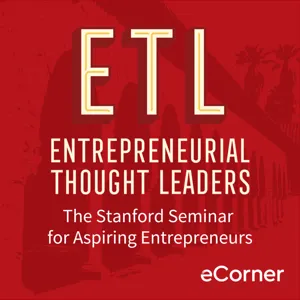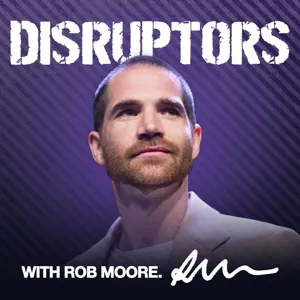Podcast Summary
Challenging conventions leads to innovation: Individuals who identify and challenge rules that hinder growth and progress can lead to groundbreaking ideas and progress.
Defying norms and breaking rules can lead to innovation and creativity, rather than trouble or conformity. As social scientist Francesca Gino discovered in her quest to understand successful non-conformists, such as Massimo Batura, the "Jimi Hendrix of Italian cooking," rule-breaking can create positive change. In her book "Rebel Talent," Gino explores how individuals who challenge conventions in constructive ways can lead to groundbreaking ideas and progress. During her visit to Batura's three Michelin-star restaurant, she was given an unexpected opportunity to work as a server, despite having no experience, and learned valuable lessons from the experience. Rebels are not troublemakers, but individuals who identify and challenge rules that hinder growth and progress.
Leading with humility and inspiring creativity: Chef Massimo Bottura fosters a collaborative and creative environment at Osteria Francescana, encouraging his team to express their individuality and contribute to the restaurant's success through their unique ideas and voices.
Massimo Bottura, the renowned chef of Osteria Francescana, leads by example with his humility and hands-on approach, inspiring his team to bring their unique ideas and voices to the table. He encourages them to think creatively by connecting food to music, art, or literature, allowing them to express their individuality and contribute to the collective success of the restaurant. Bottura's leadership style is characterized by his focus on the team as a whole, rather than individual egos, and his willingness to challenge the status quo with his curiosity and questioning nature. By fostering an environment that values creativity, collaboration, and individuality, Bottura has built a successful and inspiring culinary empire.
Embracing the 'why not?' mindset: Curiosity and open-mindedness are vital for rebel talent. Combining expertise and experimentation leads to innovative and successful outcomes.
Curiosity and open-mindedness are essential for rebel talent. Butura, a law school dropout turned restaurant owner, embodies this quality by asking himself "why not?" and exploring new opportunities despite a lack of experience or expertise. This mindset is contrasted with the tension between expertise and experimentation, where the former can lead to predictability, while the latter without foundation can be amateurish. The story of Captain Sully's miraculous landing in the Hudson River is a prime example of rebel talent, as he kept an open mind and creatively solved the problem within the limited timeframe. The combination of expertise and experimentation leads to the most innovative and successful outcomes.
The Double-Edged Sword of Experience: Experts can struggle to adopt a beginner's mindset, but reliving past novice experiences or maintaining a curious and humble attitude can help continue learning and growth.
Experience and expertise can sometimes be a double-edged sword. While it's important to gain knowledge and skills, it can also lead to a false sense of knowing it all and closing ourselves off to new learning. This was evident in the stories of Captain Sully and Chef Bautura, who remained humble and open-minded despite their extensive experience. However, research shows that even experts can struggle to adopt a beginner's mindset. For instance, a study by Ting Zhang at Columbia University found that asking experts to relive the experience of being a novice could help them regain that perspective. It's crucial to remember that no matter how much we know, there's always more to learn. By maintaining a curious and humble attitude, we can continue to grow and innovate.
Embracing diverse perspectives leads to innovative solutions: Inviting beginners or outsiders to approach complex problems can lead to groundbreaking discoveries and inventions
Approaching problems with a fresh perspective, often provided by novices or outsiders, can lead to innovative solutions. This concept was illustrated in a guitar study where those who were asked to play with their non-dominant hand felt like beginners and provided more helpful advice to new learners. Similarly, in various fields, from science to business, inviting those without expertise to tackle complex problems has led to groundbreaking discoveries and inventions. By embracing diverse perspectives and challenging our own assumptions, we can unlock new ways of understanding and solving complex challenges.
Embrace your inner rebel: Defy societal expectations, challenge rules, and value diverse perspectives to cultivate creativity and confidence
Being a rebel, or thinking and acting outside the box, is a skill that can be cultivated by anyone. Eva Duvernet's story is a great example of this, as she defied societal expectations and stereotypes to pursue her passion for filmmaking despite not having the support of networks or resources. Francesca Gino's research suggests that feeling comfortable with being uncomfortable is the first step to activating our inner rebel. By challenging ourselves to break rules and expectations, even in small ways, we can build confidence and creativity. Rebels constructively push boundaries, continue to learn, and value diverse perspectives. So, no matter your age or background, it's never too late to embrace your inner rebel and approach life with a fresh, nonconformist mindset.
Challenging the norm can lead to unexpected benefits: Defying expectations, even in small ways, can increase confidence, reduce stress, and improve performance. It can also positively impact how others perceive us.
Defying expectations and challenging the status quo, even in small ways, can lead to unexpected benefits. In a study on singing in front of peers, those who wore a non-conforming headdress reported feeling more confident and less stressed, and performed better objectively. Similarly, a professor discovered that wearing red sneakers instead of formal shoes in the classroom led students to perceive her as more influential. These findings suggest that breaking rules or going against the norm can paradoxically lead to increased confidence and better performance, and even have a positive impact on how others perceive us. So the next time you're feeling hesitant to rebel or defy expectations, remember that the potential benefits may outweigh the discomfort.
Authenticity in high-pressure situations: Being authentic and vulnerable, even in pressure situations, can lead to unexpected positive outcomes and build connections with others.
Being authentic and vulnerable, even in high-pressure situations, can lead to unexpected positive outcomes. Maurice Cheeks, the Portland Trailblazers coach, demonstrated this by rushing to support a nervous 13-year-old girl during the NBA playoffs, inspiring the crowd to join in. This act of vulnerability and authenticity was contagious, gaining him and the girl respect from the audience. Authenticity can be a powerful tool for building connections and inspiring others, despite any initial discomfort or fear of judgment. It's a reminder that breaking the rules, or acting authentically, doesn't always have negative consequences. Instead, it can lead to unexpected opportunities for growth and connection.
Constructively breaking rules for positive change: Leaders should define clear rules and trust employees to use good judgment in deciding when to follow rules vs. being creative to find new solutions.
Constructively breaking rules can lead to positive change, increased confidence, engagement, and better relationships. However, it's essential to distinguish between destructive and constructive rule-breaking. The line between the two may be thin, and even successful rebels like Facebook have faced backlash for overstepping boundaries. To encourage constructive rule-breaking, leaders must clearly define the rules that should not be broken and trust their employees to use good judgment in deciding when to follow the rules versus using creativity to find new solutions. Companies like Ariel Investments, which balance open-mindedness and rule adherence, provide examples of this balance.
Exploring the power of positive rebellion: Questioning rules can lead to unexpected joy and constructive change, but approach and delivery matter.
Being a rebel in a positive sense can lead to constructive change, while simply breaking rules for the sake of it can cause trouble. This idea is explored in the book "Quietly Creating a Revolution" and the importance of delivery and approach was emphasized. The author shared that she has applied these lessons in her personal life, including as a parent, partner, friend, colleague, and professional. A personal story about her son's curiosity and rebellion at breakfast was shared as an example of how rules can sometimes be limiting and questioning them can lead to unexpected joy. The author encourages readers to pause and consider if rules should be followed blindly or if they can be challenged for the better.
Insights on harnessing the power of rebellion from Francesca Gino: Rebellion can help individuals overcome challenges and make progress on projects. Strategies for working deeply and not letting mood dictate progress can also aid in project completion.
Francesca Gino, a professor at Harvard Business School and the author of "Rebel Talent," shared insights on how individuals can harness the power of rebellion to overcome challenges and make progress on projects. The Hidden Brain team would also like to thank Bryn Winterbottom, a member of NPR's RAD team, for her invaluable contributions to the show. If you're struggling to finish a project, tune in to next week's episode for strategies on working more deeply. Remember, as Shankar Vedantam, the host of Hidden Brain, mentioned, planning your day like a chess player and not letting your mood dictate your progress can help you make significant strides. Don't forget to follow Hidden Brain on Facebook and Twitter for more insightful episodes. If you enjoyed this episode, please share it with a friend and help spread the word. Hidden Brain is always looking for new listeners!






